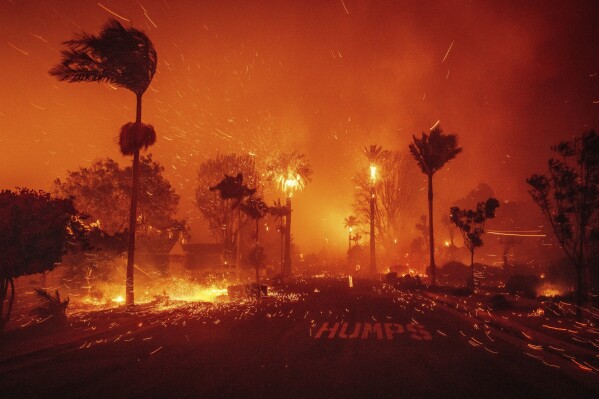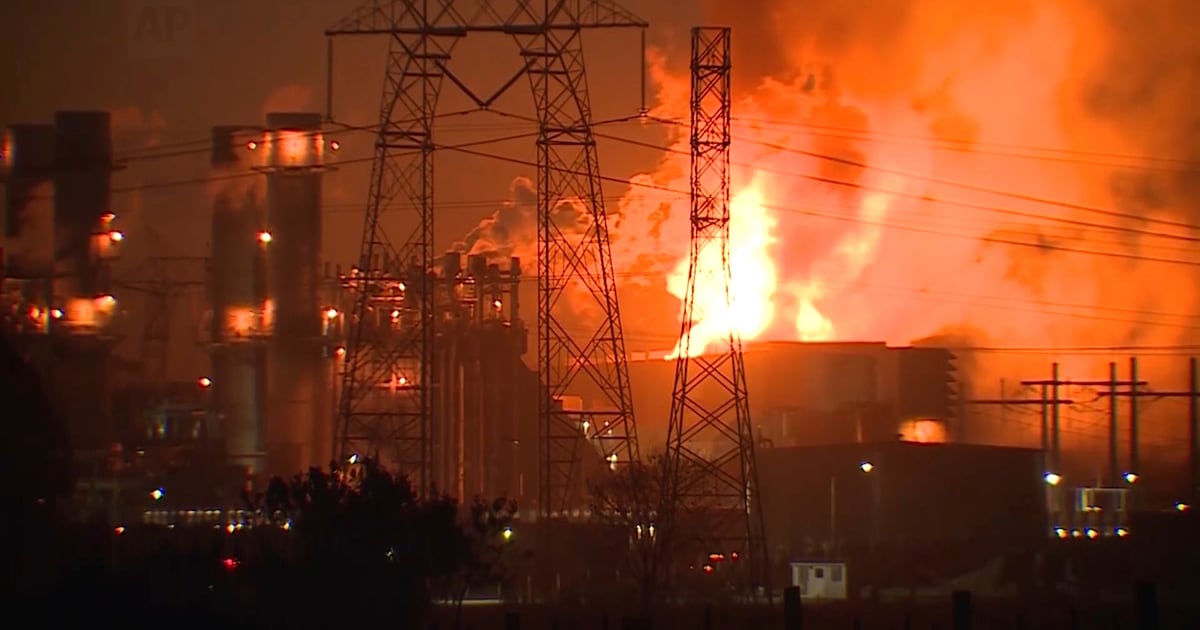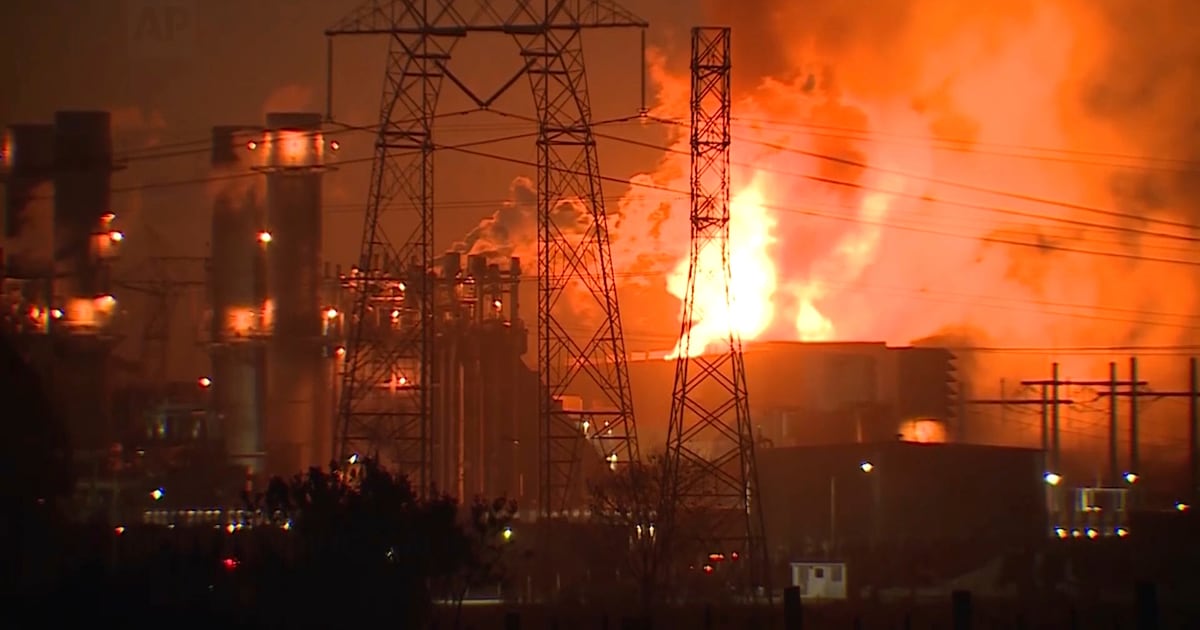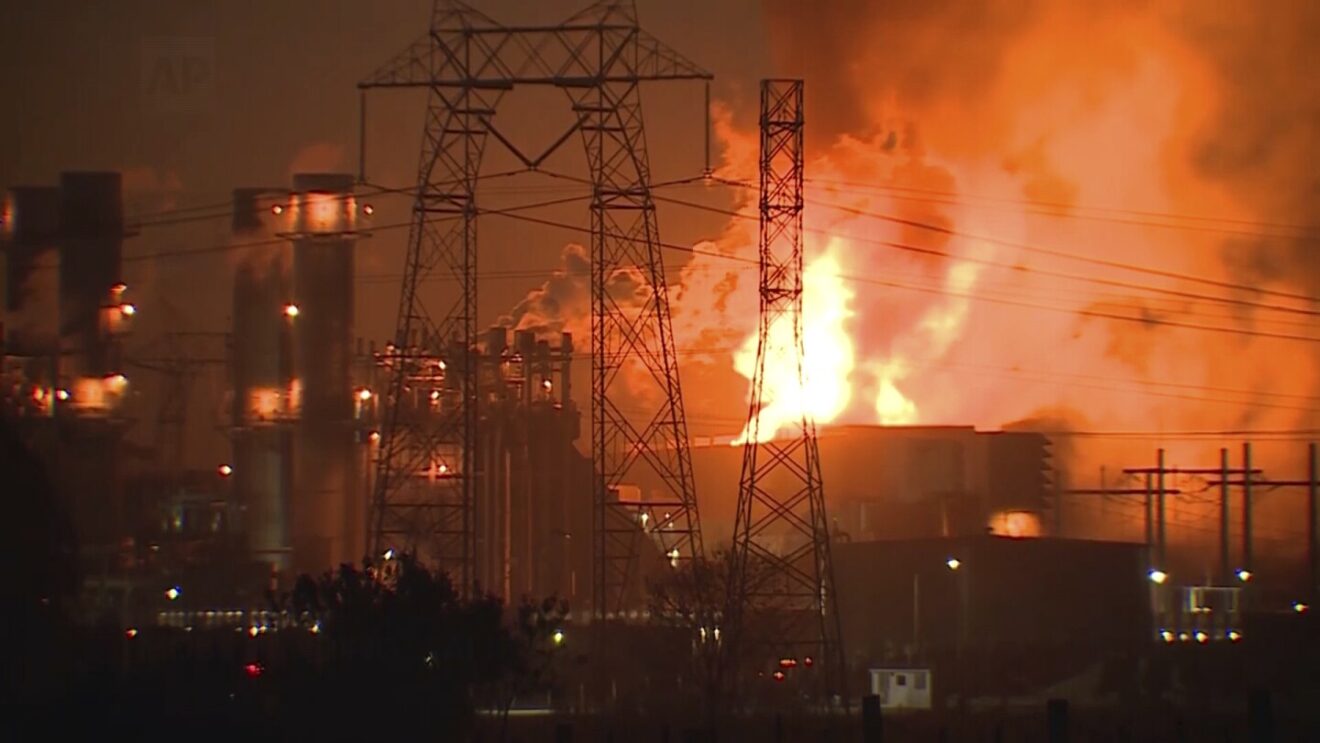## Sparks Fly at Battery City: California Plant Fire Forces Mass Evacuations
A scene ripped straight from a dystopian thriller unfolded yesterday in California: flames engulfed one of the world’s largest battery plants, sending thick smoke billowing into the sky and forcing thousands to flee their homes. This isn’t just a localized fire; it’s a stark reminder of the potential risks inherent in our ever-increasing reliance on electric vehicles and renewable energy.

A Sea of Flames Threatens Coastal Town
Evacuation Orders and Highway Closures:

The inferno at the Moss Landing Power Plant triggered a mass evacuation, impacting approximately 1,500 residents in Moss Landing and the surrounding Elkhorn Slough area. Monterey County officials, citing the urgency of the situation, issued mandatory evacuation orders, urging residents to seek shelter with friends, family, or at a temporary evacuation center established in the area. The impact extended to transportation networks as a section of Highway 1, a crucial coastal artery, was temporarily shut down, further isolating the affected communities.

Immense Firepower:
As dark plumes of smoke billowed into the sky, the fire’s intensity became evident. The blaze, which ignited Thursday afternoon, quickly consumed a significant portion of the facility, sending towering flames that were visible for miles. Firefighters, battling the relentless inferno, faced formidable challenges due to the sheer scale of the fire and the hazardous nature of lithium-ion batteries.

The Unique Threat of Lithium Batteries:
The fire at the Moss Landing Power Plant highlighted the inherent risks associated with lithium-ion battery storage, a technology increasingly vital for the renewable energy sector. While lithium batteries offer advantages in terms of energy density and efficiency, they are susceptible to thermal runaway, a dangerous chain reaction that can lead to rapid and intense fires. These fires are notoriously difficult to extinguish, as water can react with the lithium, generating flammable hydrogen gas and intensifying the blaze.
Vistra Energy: Under Scrutiny Again
History of Fires at the Moss Landing Plant:
The incident at the Moss Landing Power Plant cast a shadow over Vistra Energy, the Texas-based company that owns the facility. This is not the first time the plant has been plagued by fires. In both 2021 and 2022, fires erupted at the Moss Landing facility, linked to malfunctions in the fire sprinkler system. These malfunctions resulted in the overheating of lithium-ion battery units, ultimately leading to the fires. The recurrence of fires raises serious concerns about the adequacy of safety protocols and the potential for systemic vulnerabilities within the plant’s operations.
Vistra’s Response and Future Investigations:
Following the latest fire, Vistra Energy issued a statement emphasizing their commitment to the safety of the community and their personnel. The company confirmed that all individuals present at the site were safely evacuated upon detection of the fire. Vistra also pledged to initiate a thorough investigation into the cause of the fire, asserting their dedication to identifying and addressing any underlying issues. However, the public awaits concrete details regarding the investigation’s scope and timeline, as well as the specific measures Vistra plans to implement to prevent future occurrences.
Public Trust and Accountability:
The repeated fires at the Moss Landing Power Plant have undoubtedly eroded public trust in Vistra Energy. The series of incidents raises questions about the company’s ability to ensure the safe and responsible operation of its lithium-ion battery storage facilities. For the renewable energy sector to gain widespread acceptance, it is imperative that companies like Vistra demonstrate a unwavering commitment to safety and transparency. The outcome of the investigation and the subsequent actions taken by Vistra will have a profound impact on public perception and the industry’s credibility as a whole.
Ripple Effects Across the Renewable Energy Landscape
Impact on California’s Renewable Energy Goals:
The fire at the Moss Landing Power Plant presents a significant setback for California’s ambitious renewable energy goals. The facility plays a critical role in storing electricity generated from solar and wind power, ensuring a reliable and stable grid. With a portion of the facility now out of commission, California’s ability to integrate large amounts of renewable energy into the grid is compromised. This incident underscores the vulnerability of renewable energy infrastructure to unforeseen events and the need for robust backup systems and redundancy.
Safety Concerns and Regulatory Implications:
The incident at Moss Landing has sparked widespread concern about the safety of lithium-ion battery storage, prompting calls for increased scrutiny and potentially stricter regulations. Governments and regulatory agencies are likely to re-evaluate existing safety standards and protocols for lithium-ion battery storage facilities. This could result in enhanced fire suppression systems, stricter siting requirements, and more stringent operational guidelines. The industry may also see an increase in insurance premiums and stricter liability standards.
Innovation and Risk:
The fire at the Moss Landing Power Plant serves as a stark reminder of the inherent risks associated with emerging technologies. While lithium-ion battery storage offers immense potential for decarbonizing the energy sector, it is crucial to acknowledge and mitigate the associated risks. Striking a balance between fostering innovation and ensuring safety is paramount. The incident highlights the need for ongoing research and development to improve the safety and reliability of lithium-ion battery technologies. Furthermore, it underscores the importance of robust safety protocols, rigorous testing, and effective incident response plans throughout the lifecycle of these facilities.
Conclusion
The blaze at the massive battery plant in California serves as a stark reminder of the potential risks associated with the rapidly expanding world of electric vehicle technology. While the shift to sustainable energy sources is crucial for combating climate change, incidents like this highlight the need for stringent safety protocols and robust fire suppression systems within these facilities. The potential for large-scale battery fires raises concerns not only about environmental damage and economic losses, but also about the safety of surrounding communities. This incident pushes us to confront a crucial question: can we balance the urgency of the climate crisis with the imperative for responsible and safe development of green technologies? As we continue to embrace electric vehicles and renewable energy, we must prioritize research and innovation in fire safety, ensuring that the pursuit of a sustainable future doesn’t come at the cost of jeopardizing lives and our environment. This fire isn’t just about batteries; it’s a wake-up call for a conversation we can no longer afford to ignore.





Add Comment